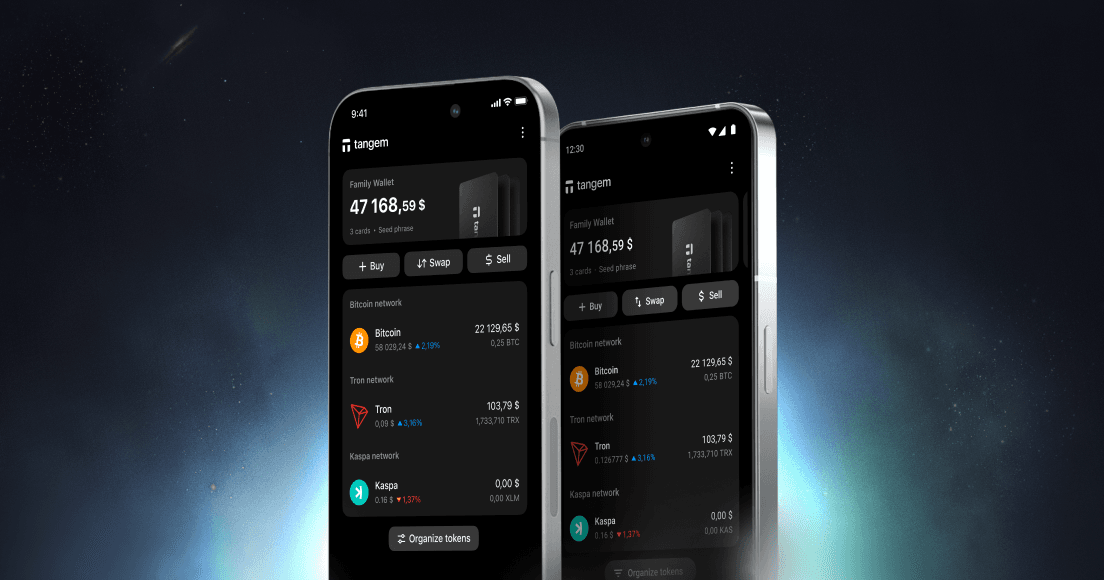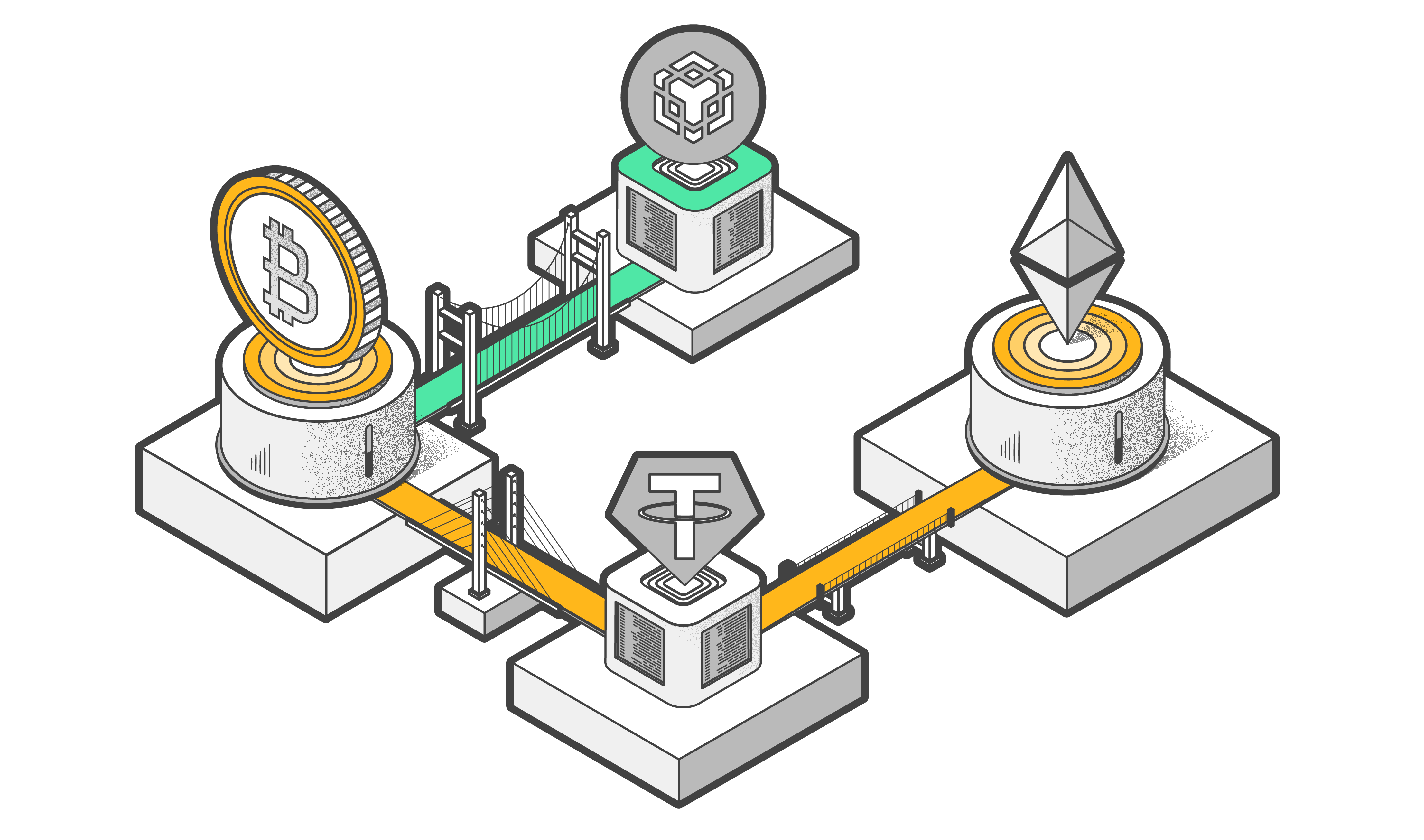
Intercambios entre cadenas, puentes y DEXs, explicados en detalle

Las blockchains individuales funcionan como ecosistemas digitales aislados donde todas las aplicaciones están interconectadas por una única red. Por ejemplo, todos los tokens de la blockchain Ethereum están conectados, lo que facilita su intercambio descentralizado sin demasiados problemas. Sin embargo, con el rápido aumento de las redes blockchains, la falta de conectividad entre ellas ha creado la necesidad de una infraestructura entre cadenas que permita la interoperabilidad entre múltiples blockchains.
Sin una infraestructura entre blockchains, éstas siguen estando tan desconectadas como las aplicaciones independientes en el entorno Web2 actual. Por lo tanto, los intercambios entre blockchains permiten el intercambio sin problemas de activos digitales entre las mismas. Al igual que los intercambios descentralizados para redes de blockchains individuales, los intercambios entre blockchains se están volviendo cruciales para un mundo de blockchains interconectadas.
Sobre los intercambios entre cadenas
Los intercambios entre cadenas en bolsas centralizadas (CEX) permiten a los usuarios intercambiar criptomonedas de diferentes blockchains dentro de una única plataforma. Los usuarios depositan sus criptomonedas en la CEX, que luego se hace cargo de estos fondos y administra el proceso de transacción entre cadenas.
Sin embargo, los intercambios entre cadenas en los CEX conllevan bastantes riesgos. Los usuarios deben confiar en que el intercambio custodiará sus fondos, lo que crea un riesgo importante. Los usuarios podrían perder sus activos si el exchange es pirateado, insolvente o fraudulento.
Además, los CEX están sujetos a la supervisión regulatoria, que puede variar según la jurisdicción y afectar las operaciones del intercambio y el acceso de los usuarios a sus fondos. Los problemas técnicos, como interrupciones o demoras del sistema, pueden interrumpir las transacciones y el acceso a los fondos, especialmente durante los períodos de alta demanda.
Además, los CEX generalmente requieren que los usuarios completen la verificación KYC, lo que compromete la privacidad del usuario ya que la información personal es almacenada por el exchange y podría quedar expuesta en una violación de datos. Los usuarios deben sopesar estos riesgos frente a la comodidad y la liquidez que brindan los CEX al decidir cómo realizar intercambios entre cadenas.
Los exchanges descentralizados entre cadenas (DEX) como OKX DEX están surgiendo como una solución contra los riesgos asociados con los exchanges centralizados. Pero, ¿qué son exactamente los DEX entre cadenas y cómo funcionan?
Intercambios descentralizados (DEX)
Los exchanges descentralizados (DEX) son mercados entre pares en los que los usuarios de criptomonedas pueden realizar transacciones directamente sin ceder el control de sus fondos a un tercero. Estas transacciones se facilitan mediante contratos inteligentes, que son acuerdos autoejecutables codificados en software.
DEX entre cadenas
Un DEX entre cadenas permite el intercambio de activos digitales a través de múltiples redes blockchain. Este tipo de intercambio se basa en puentes entre cadenas y protocolos de interoperabilidad para mover activos entre diferentes blockchains.
Los puentes entre cadenas son protocolos que permiten que los tokens y los datos se muevan entre diferentes redes blockchain. Funcionan bloqueando activos en una blockchain y acuñando tokens equivalentes en otra blockchain, o bien quemando tokens en la blockchain de origen y acuñando otros nuevos en la blockchain de destino.
Estos puentes sirven como infraestructura fundamental para los intercambios entre cadenas, lo que permite que los activos se muevan a través de los límites de la blockchain sin la necesidad de intermediarios centralizados. Por ejemplo, un puente entre cadenas puede bloquear Ethereum (ETH) en la blockchain Ethereum y generar Wrapped Ethereum (WETH) en la Binance Smart Chain (BSC), lo que permite que el activo se utilice dentro del ecosistema de BSC.
Los DEX entre cadenas superan las limitaciones de los DEX tradicionales al proporcionar una plataforma para que los usuarios intercambien activos de varios ecosistemas de blockchains sin problemas. Se basan en la funcionalidad proporcionada por los puentes entre cadenas para ofrecer una plataforma en la que los usuarios pueden intercambiar activos de diferentes blockchains directamente.
El problema con los puentes entre cadenas
La comunicación entre cadenas implica concesiones en términos de confianza o flexibilidad que no son necesarias para las interacciones dentro de una sola blockchain. Esto significa que lograr la compatibilidad entre contratos inteligentes en diferentes blockchains requiere concesiones en estas áreas, a diferencia de la operación dentro de una sola blockchain, que no tiene estos problemas.
Una consideración clave en los puentes entre cadenas es el uso de activos de tipo wrapped en lugar de activos nativos. Los activos wrapped representan tokens de otra blockchain e introducen problemas adicionales de seguridad y confianza, ya que dependen de una o más entidades para mantener los tokens subyacentes de forma segura.
Otro aspecto importante de los puentes entre cadenas es la finalidad: la garantía de que los fondos en la cadena de destino son accesibles una vez que se confirman en la cadena de origen. Sin una finalidad garantizada, una reversión de la transacción en la cadena de origen (como una reorganización de bloques) podría tener efectos negativos en la cadena de destino, lo que podría conducir a problemas como la emisión de tokens puenteados no admitidos.
Hay otras razones específicas por las que fallan los intercambios a través de puentes entre cadenas.
Razones comunes de fallos en intercambios entre cadenas
Hay tres tipos de intercambios entre cadenas que originan un fallo
- Intercambios de cadena de origen con errores.
- Intercambios de cadena de destino con errores.
- Transacciones entre puentes con errores.
A continuación se explica por qué los intercambios de la cadena de origen y de la cadena de destino pueden no tener éxito:
- Error de transmisión: ocurre cuando una transacción no se comunica correctamente a la red blockchain. Esto puede suceder si los detalles de la transacción no se envían correctamente desde la cadena de origen al puente, lo que hace que la cadena de destino no ejecute o reconozca el intercambio.
- Gas insuficiente: gas insuficiente significa que no se asignó suficiente criptomoneda para cubrir las tarifas de transacción requeridas para el procesamiento en la blockchain.
- Cantidad de criptomonedas aprobada insuficiente: este problema surge cuando la cantidad de criptomonedas aprobada para su uso en el intercambio es menor que la requerida. El intercambio no se puede completar si el usuario no ha aprobado o proporcionado suficientes tokens para la transacción.
- Error de ejecución del contrato DEX de terceros: esto sucede cuando hay un problema con el contrato inteligente del intercambio descentralizado que maneja el intercambio. Esto podría deberse a errores de codificación, errores o problemas inesperados en la lógica del contrato.
- La transacción se aceleró o se canceló: acelerar una transacción puede implicar aumentar la tarifa del gas para priorizarla, mientras que cancelarla impide que se ejecute. Estas acciones pueden interrumpir el proceso de intercambio, lo que puede provocar un fracaso.
- Los tokens comercializados fueron tokens safemoon o honeypot: los tokens safemoon o honeypot son tipos de criptomonedas que pueden tener características o riesgos específicos. Los tokens safemoon pueden tener tarifas de transacción altas o problemas de liquidez, mientras que los tokens honeypot están diseñados para atrapar fondos y evitar que los usuarios los retiren.
- Se activó la lista de bloqueo del puente de terceros: una lista de bloqueo es un conjunto de direcciones o criterios que un puente o DEX utiliza para evitar transacciones que involucran ciertos tokens o entidades. Si un intercambio de puente entre cadenas involucra tokens o direcciones que están en la lista de bloqueo del puente, la transacción se bloqueará.
- Cantidad mínima/máxima superada entre cadenas: los puentes suelen tener límites mínimos y máximos para las cantidades que se pueden intercambiar entre cadenas. La transacción fallará si la cantidad de tokens que se intercambian no se encuentra dentro de estos límites especificados.
- Liquidez insuficiente en el puente: la liquidez se refiere a la disponibilidad de activos en los fondos de liquidez del puente necesarios para completar el intercambio. Si el puente no tiene suficiente liquidez para cubrir la cantidad de tokens que se intercambian, la transacción no puede continuar. Esto puede suceder si el fondo de liquidez se agota o si hay un desequilibrio entre los activos de origen y destino en el puente.
- Se agotó el tiempo de espera de la transacción entre puentes: se produce un tiempo de espera cuando una transacción tarda demasiado en procesarse, lo que provoca un error. Esto puede suceder si hay retrasos en el mecanismo del puente para mover activos entre cadenas o si hay problemas de congestión de la red.
Reembolsos entre cadenas
Si realiza un intercambio con OKX DEX en Tangem Express y la transacción falla, puede obtener un reembolso. Los reembolsos se producen cuando una transacción iniciada falla en cualquier momento y el usuario necesita recuperar sus activos. Estos reembolsos pueden activarse por cualquiera de los motivos mencionados anteriormente.
Si el problema ocurre con un intercambio de la cadena de origen o la transacción entre puentes, el usuario recibirá de vuelta su token de origen y es probable que ni siquiera se le deduzca la tarifa de transacción.
Sin embargo, si el intercambio de la cadena de destino falla, el usuario recibirá sus fondos en el token intermedio que se utilizó para el puente. Estos tokens suelen incluir opciones populares como USDT, USDC, DAI, WETH y ETH.
Preguntas frecuentes
¿Cuál es la diferencia entre un intercambio dentro de la cadena y un intercambio entre cadenas?
Un intercambio dentro de la cadena implica la conversión de criptomonedas dentro de la misma red blockchain, donde tanto los tokens que envían como los que reciben están en esta red. Por el contrario, un intercambio entre cadenas implica la conversión de activos en diferentes redes de blockchain, donde el token que envía está en una red y el token que recibe está en otra.
¿Por qué fallan los swaps?
Durante la congestión de la red, las tarifas de gas pueden aumentar significativamente. Los mineros priorizan las transacciones con tarifas de gas más altas, por lo que una transacción puede fallar si no se detecta rápidamente. Es aconsejable utilizar las tarifas de gas predeterminadas recomendadas por la plataforma al iniciar una transacción.
La profundidad de la liquidez puede fluctuar en mercados volátiles. Si el monto de la transacción cae por debajo del mínimo requerido, el contrato puede detener la transacción, lo que lleva a un fracaso debido a un deslizamiento excesivo.
Además, si un usuario inicia varias transacciones idénticas simultáneamente pero solo tiene saldo suficiente para la primera transacción, las transacciones posteriores fallarán.
¿Aún debo pagar las tarifas de red después de que falle una transacción?
Sí, se requieren tarifas de red incluso si falla una transacción. Las tarifas de red compensan a los mineros o validadores por procesar la transacción, ya que consumen recursos de la red independientemente del éxito de la transacción.
